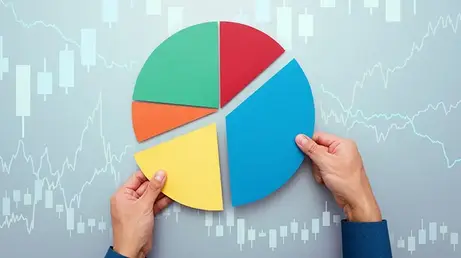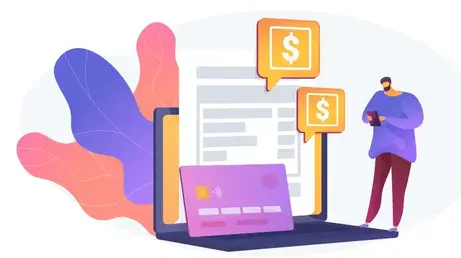
Being a young professional is an exciting time in life. When someone graduates from their post-secondary studies, they begin a new chapter that may include embarking on a career, relocating to a new city, and enjoying new relationships.
As exciting as this is, it can be challenging for young professionals to manage their finances. With the high cost of living and the inevitable costs of beginning a new life, debt can creep in. Needless to say, saving for things like a wedding or down payment for a home may seem impossible. But the more informed someone is in how to best manage their financial resources, the more likely they’ll be able to conquer the financial hurdles that come their way.
As November is Financial Literacy Month in Canada, Industry Update spoke with two financial literacy experts and Chartered Professional Accountants (CPA), Leigh Sindlinger and Tami Zaranski, to see what their advice is for young professionals.
What are some tips you have for young professionals when it comes to budgeting?
To begin, Tami suggests taking stock of what you’re spending your money on. “Map it out. If you don’t know where you are there is no way you will get to where you want to go,” she says. “Be sure to know what your financial map looks like on a weekly, monthly, and annual basis.”
“Track all your costs, not just the big ones, and patterns will emerge. For example, you may find that the cost of your daily coffee adds up over time. Most people have no idea what this total is as it’s spent in small amounts, day by day,” Tami adds. “Once you have a chance to see what your financial landscape looks like, you will be able to make small changes to improve your budgeting process.”
But budgeting responsibly doesn’t mean you have to deprive yourself of the things you enjoy. Leigh suggests splitting your income into the following buckets: necessities (rent, food, etc.); savings (RRSPs, TFSAs, etc.); and a remaining category that can be used for whatever you want. “This category is for personal things you can spend your money on without feeling guilty, such as lattes, gadgets, clothes, concerts, etc.,” says Leigh. “Having some money to spend on smaller things can help you stay on track with saving for the big things.”
How can someone save for the future on top of everything else?
Both Leigh and Tami recommend having automatic withdrawals set up. For example, you can have a set percentage or dollar amount of every paycheque automatically withdrawn and transferred into a savings account.
“My advice is to start early and not worry about the amount put away, but the consistency of it,” says Tami. “I often recommend increasing your savings contributions every year by 5-10%. This will go unnoticed as the amount is nominal but the increase over time will add up and grow your investments and savings.”
Leigh suggests creating two different buckets for dividing your savings into – one for retirement and another for emergencies or “rainy days”. She explains, “Retirement savings can be invested in RRSPs or TFSAs – depending on your tax situation. Rainy day savings can be set aside for unexpected expenses or big-ticket items. It’s important to have rainy day savings, because expenses often come up that you simply can’t budget for.”
What’s your advice on paying off credit (i.e., student loans, credit cards, lines of credit)?
Leigh and Tami both recommend prioritizing paying off credit accounts with the highest interest rates, and if possible, consolidating all debts into a single account, ideally with a low interest rate.
Tami also recommends, “Call your credit card companies and request they reduce the interest they’re charging you – they may do this when asked.”
If someone has limited knowledge of how investing works, but has some additional money set aside and would like to use it wisely, what would you advise?
Tami says, “Talk to a number of professionals, not just at your bank, and ask a lot of questions. Compare options and the benefits of each and don’t be afraid to diversify, even on small investments.”
She adds, “There isn’t a ‘one size fits all’ investment plan as everyone’s needs are different, so each person must find what works for them. Knowledge is key to understanding investments and creates more assurance and confidence to grow your money.”
Leigh also suggests seeking advice from a professional, but warns that some may be more motivated by commission rather than their clients’ best interests. She recommends noting whether someone’s title is financial “advisor” or “adviser” – as “financial advisors” may actually be salespeople according to this MoneySense article.
Do you have any relevant personal experiences you’d like to share?
Leigh says, “My mother was the finance guru in our house and helped me understand how money works. Neither she nor my father worked in high-paying jobs, but she took an interest in the stock market and invested small amounts as often as she could. As a result, my parents were able to retire very comfortably without any money worries.”
Tami notes, “Investing takes time. Try to resist the mentality that investing is only worthwhile if you’re investing a lot of money at once.”
Is there any other advice you would like to offer?
“Get a finance mentor early,” recommends Tami. “Try different people on and look to see what they can offer you by way of experience and skill.”
She adds, “Don’t be afraid to reach out and learn from other people’s mistakes and successes. People are willing to share what they know and they also benefit from being a mentor, so it’s a win-win situation.”
As for Leigh, she says “I often find the notion of willpower is completely overlooked when it comes to money. I was taught at a very young age that if I wanted to buy something, I had to save for it, which meant not spending my money on smaller immediate things, and being patient while I waited for my savings to grow.”
Leigh concludes, “Willpower is the connection between understanding how money works, and actually being able to stay within your budget, so you don’t end up in debt.”
Interested in learning more? Tami and Leigh recommend the following reading:
- CPABC's financial literacy resources
- Rich Dad, Poor Dad by Robert Kiyosaki and Sharon L. Lechter
- The Barefoot Investor and The Barefoot Investor for Families by Scott Pape
- Ellevest, a US-based investment site, with a weekly newsletter targeted to women
Free CPABC financial literacy sessionsDid you know that CPABC offers free financial literacy presentations that can be delivered to workplaces, community groups, schools, and more? These sessions can be targeted towards different audiences (i.e. post-secondary students, entrepreneurs, seniors, New Canadians, etc.). Book your session today!
Leigh Sindlinger, CPA, CGA, is the Woodlands accounting manager for Bell Lumber & Pole, and a financial literacy educator and speaker for CPA Canada
Tami Zaranski, CPA, CMA, MBA, is a senior financial consultant at SIMAT Consulting, director of finance for the non-for-profit organization Garth Homer Society, and a financial educator and speaker for CPA Canada.
Vince Kanasoot is a communications specialist with the Chartered Professional Accountants of British Columbia.



